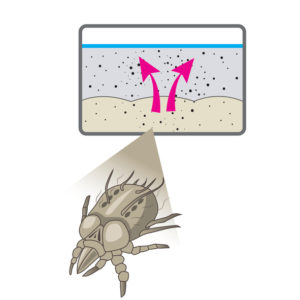Does Allergy-Proof Bedding Help to Reduce Allergies?

When a person has a dust or dander allergy, it’s common for symptoms to be worse at night. Why? Because dust mites live in dust, feed on skin cells, and cause issues for those with allergies. Due to the many hours most people spend in their beds each day, it is not uncommon for a bed to have a large number of skin cells – which makes it a top target for dust mites. One of the proposed solutions to this problem is allergy-proof bedding, but does it really work?
The truth about dust mite allergies
Dust mite allergies are actually caused by proteins from dust mites decaying. These proteins can result in allergic reactions that look just like many other types of allergic reactions: Sneezing, itchy skin, runny nose, watery eyes, and coughing. As is true of other allergens, dust mites can also lead to asthma attacks.
Washing sheets regularly can help
A person who is dealing with a reaction to dust mite allergies can start by washing their sheets on a regular basis. When the sheets are clean, they are freer of skin cells that attract dust mites, and any dust mites that are there are killed in the cleaning process. A person with a minor reaction to dust mites may find this to be enough. However, those with more serious reactions may consider bedding that is specifically designed to prevent reactions to dust mites.
What is allergy-proof bedding?
The way this bedding is made is simple: It is very tightly woven, which should help prevent allergies in two different ways. One, it helps to prevent allergens that are inside the bed (such as inside the mattress and pillow) from getting out where they can cause a reaction. Two, it helps to prevent dead skin cells from getting into the bedding, which starves the dust mites from cells to feed on.
Does this type of bedding really help?
It depends on the brand. There are a few on the market and some of them claim that they have a unique fabric that makes them allergy proof. This is not true. In fact, the material does not matter – the only thing that matter is that it is woven in such a way that the pores are six or fewer microns in diameter. These allergy covers should be put on items that aren’t washed on a regular basis, such as a mattress, pillow, duvet, or box spring.
When used correctly, this type of bedding can be helpful. However, it is important to note that this is only true if the allergen in question is dust mites. Other allergies, such as those to pollen, will not be affected by this type of bedding. To learn how to reduce those symptoms, contact Allergy, Asthma, and Immunology Medical Group at 805-658-9500.



